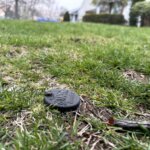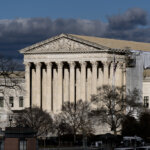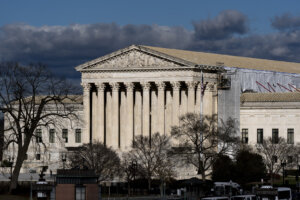
Hurricane Sandy is rolling toward the Northeast and is expected to bring strong winds and heavy rain to Long Island—just in time for Halloween.
Officials are urging residents to prepare for the worst of the storm, dubbed “Frankenstorm,” and to heed any warnings and evacuation notices that authorities may issue in the days to come.
Last year, more than 500,000 LIPA customers lost power when Tropical Storm Irene slammed the Island.
The Long Island Power Authority announced that it has begun preparing for the storm and urges customers to make “appropriate preparations for this possible multi-day event.”
In the event that Hurricane Sandy does hit Long Island, we have put together a Hurricane preparedness guide for all Long Islanders.
Here are some tips:
Be prepared for widespread outages.
Red Cross suggests that you have one gallon of water per person that could last at least three days.
Buy batteries and flashlights.
DON’T buy candles because they can cause a fire.
Heed government warnings.
Make copies of any important documents and carry them with you if you’re told to evacuate.
Make a go-bag. It should include water, snacks, documents, medications, extra contact lens or glasses, and other important items.
Download Red Cross Hurricane app–available on Android and iPhones—to get live updates from National Weather Service and additional preparedness information.
Recommended Items To Include In A Basic Emergency Supply Kit:
- Water, one gallon of water per person per day for at least three days, for drinking and sanitation
- Food, at least a three-day supply of non-perishable food
- Battery-powered or hand crank radio and a NOAA Weather Radio with tone alert and extra batteries for both
- Flashlight and extra batteries
- First aid kit
- Whistle to signal for help
- Dust mask, to help filter contaminated air and plastic sheeting and duct tape to shelter-in-place
- Moist towelettes, garbage bags and plastic ties for personal sanitation
- Wrench or pliers to turn off utilities
- Can opener for food (if kit contains canned food)
- Local maps
- Cell phone with chargers, inverter or solar charger
- Additional Items To Consider Adding To An Emergency Supply Kit:
- Prescription medications and glasses
- Infant formula and diapers
- Pet food and extra water for your pet
- Cash or traveler’s checks and change
- Important family documents such as copies of insurance policies, identification and bank account records in a waterproof, portable container. You can use the Emergency Financial First Aid Kit (EFFAK) – PDF, 277Kb) developed by Operation Hope, FEMA and Citizen Corps to help you organize your information.
- Emergency reference material such as a first aid book or information from www.ready.gov.
- Sleeping bag or warm blanket for each person. Consider additional bedding if you live in a cold-weather climate.
- Complete change of clothing including a long-sleeved shirt, long pants and sturdy shoes. Consider additional clothing if you live in a cold-weather climate.
- Household chlorine bleach and medicine dropper – When diluted nine parts water to one part bleach, bleach can be used as a disinfectant. Or in an emergency, you can use it to treat water by using 16 drops of regular household liquid bleach per gallon of water. Do not use scented, color safe or bleaches with added cleaners.
- Fire Extinguisher
- Matches in a waterproof container
- Feminine supplies and personal hygiene items
- Mess kits, paper cups, plates and plastic utensils, paper towels
- Paper and pencil
- Books, games, puzzles or other activities for children
IF YOU ARE TOLD TO “SHELTER IN PLACE”
- Go inside
- Close all windows and doors
- Turn off all ventilation systems
- Turn on radio or television
- Stay calm
IF YOU ARE TOLD TO RELOCATE/EVACUATE
- Take your disaster supplies kit with you
- Secure your home
- Plan ahead – you may not be able to bring your pets with you.
- Stay calm
Phone numbers to consider:
NYS Office of Emergency Management State Emergency Coordination Center
24 hours (518) 457-2200
FEMA
1-800-621-FEMA (3362)
Nassau County:
- Nassau Office of Emergency Management ( 516) 573-0636
- Nassau County Office of Emergency Management E-mail: [email protected]
- Nassau County Main Number (516) 571-3000
- Nassau County American Red Cross (516) 747-3500
- Nassau County Police (516) 573-7000
- Glen Cove Police Department (516) 676-1000
- City of Long Beach (516) 431-1000
- City of Long Beach Police Department (516) 431-1800
Suffolk County:
- Emergency Management (631) 852-4900
- Police 5th Precinct (631) 854-8500
- Police 6th Precinct (631) 854-8600
- Police 7th Precinct (631) 852-8700
- Public Works (631) 852-4010
- Health Department (631) 853-3036
- Bus Service (631)852-5200
- Water Authority (24 hour repair) (631) 665-0663



























